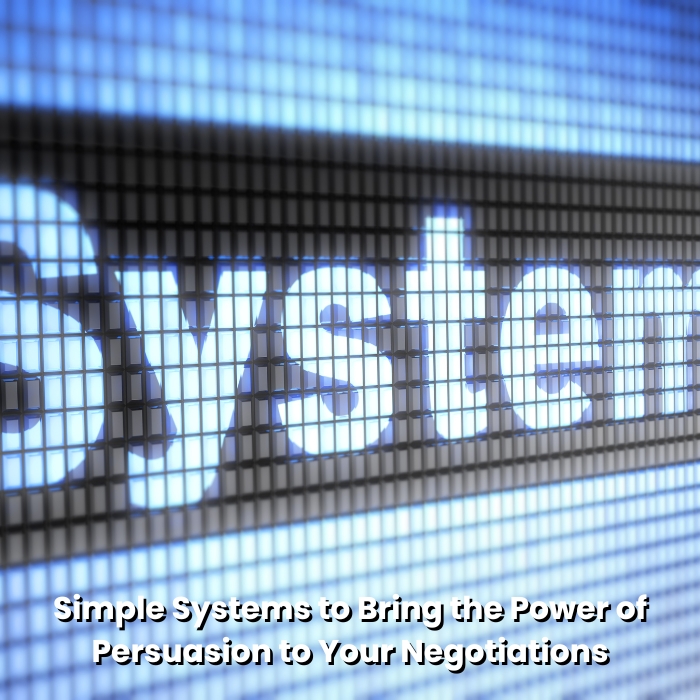
Have you been conditioned to believe that concessions—trade-offs that involve conceding or compromising during a negotiation—are signs of weakness? It’s time to dispel this myth once and for all.
Effective negotiation is a dynamic process of give and take. While it’s true that concession is the act of yielding, skilled negotiators strategically plan for this inevitability.
As with most aspects of negotiation, your intention is the key to success. When you’re proactive and plan in advance, you’ll avoid being caught off guard and yielding the wrong things.
First Things First: Know Your BATNA
Before entering any negotiation, it’s important to know your BATNA (Best Alternative to a Negotiated Agreement). Identifying your BATNA gives you a clear sense of your options in the event that you don’t get a deal.
To see what a BATNA looks like in action, let’s take the example of shopping for a new item that’s a pretty big investment: a car, appliance, even a pair of designer shoes!
When you’re making a major purchase, you’ll typically look at a number of factors—with price being a major point of consideration. If the item you’re looking to purchase has an offered price that’s above the price you know you can get elsewhere, then you potentially have a strong BATNA.
Notice that I used the word potentially. Why? Because price isn’t the only factor that matters! People often get stuck on comparing only price and end up walking away when in fact their BATNA isn’t as strong as they initially thought it was.
Say you’re purchasing a washing machine and trying to decide between two competitors. Machine A is $1,000 and Machine B is $1,200. On its face, it looks like Machine A is a better deal. Conventional BATNA wisdom advises that if you’re negotiating for Machine B, you know that Machine A is your BATNA. According to this approach, if you can’t get the price for Machine B below $1,000, then you can walk away knowing your best alternative is better.
Well, I say to heck with conventional wisdom! Price shouldn’t be your only consideration in determining your BATNA. Machine A may cost $200 less, but that doesn’t necessarily mean it’s the better deal. What if Machine B comes from a trusted supplier, offers a better warranty, and has a special delicate cycle so that you won’t have to hand-wash your intimates ever again? Those factors alone may be worth $200!
Ultimately, that’s for you to decide. BATNA can be very personal—and there’s no right or wrong answer. What constitutes a best alternative for you will depend on how you weigh the various factors at play.
So, how do you determine your BATNA?
It’s important to do your homework. Ideally before any negotiation, you’ll contemplate, explore, and list all the alternatives available to you if the negotiation fails. You’ll evaluate these options and pick the one that would provide the best overall value to you. Now that you have your BATNA, you can meaningfully set your bottom line.
When used effectively, BATNAs provide significant bargaining power—but that power goes both ways, so consider the other side’s BATNA as well.
How to Effectively Use Concessions in Negotiations
Once you’ve figured out your BATNA, you’ll be in a much better position to plan your concession strategy and ultimately get what you want:
-
- Consider the “why.” During the give-and-take of negotiation, there will likely be trade-offs on both sides. Consider priorities—not only yours, but the other party’s as well. Similarly, consider the “why:” the emotional underpinning that motivates you and the person you’re negotiating with. What concessions can you afford to give without losing your needs? How can you meet the other side’s “why” without sacrificing your own?
- Time concessions strategically. Many negotiation instructors will tell you to always make the other side give the first concession, but my approach to timing is different: so long as you’ve done your work in advance and planned for your concessions mindfully, it’s okay to vary the timing. There are even situations when it may be more effective to offer the first concession. Either way, when your position is strong and you’re well-prepared for the negotiation, nobody is going to move you unless you want to be moved.
- Pace yourself. Studies suggest that people react more favorably to concessions that are doled out in increments rather than all at once, so avoid giving all your concessions too early. Keep some in your back pocket to produce as trade-offs for something important that may come up during the negotiation. You should also avoid offering too big a concession too early in the negotiation. This common mistake can signal that you don’t believe your own demands are realistic.
- Make sure there’s reciprocity. Is the other side giving concessions to match yours? Women often make the mistake of expecting others to know what we want and need, and this assumption usually results in us getting neither. So don’t be afraid to ask for reciprocity—especially if the other side isn’t volunteering it! Express what you want. Identify your concession and suggest an appropriate reciprocal concession. Unless you have a good tactical reason to do so, never give back-to-back concessions without anything in return.
- Offer contingent concessions. If you’re uncertain that your bargaining partner will reciprocate, signal that you’re prepared to give x if they’re prepared to give or do y. When used sparingly, contingent concessions can build trust and credibility to help move the negotiation forward.
These tips will give you the foundation to start using concessions to your advantage. Above all else, remember to be intentional in how you handle your concessions. I have full confidence that when you plan ahead and harness your true intentions, you’ll be successful in your next negotiation.
Want to learn more negotiation strategies for getting what you deserve in life?









